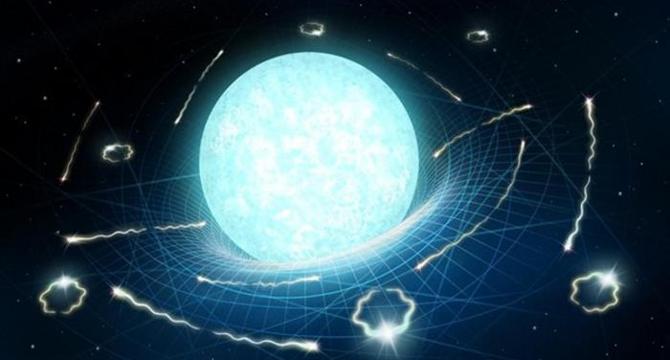Bioengineer
6h
184

Image Credit: Bioengineer
Universe Fades Faster Than Expected—Yet Still Over Vast Timescales
- Researchers from Radboud University Nijmegen revealed evidence of evaporation process in celestial bodies beyond black holes like neutron stars and white dwarfs, impacting the universe's fate over vastly shorter timescales than previously thought.
- Their study extends Hawking radiation influence to diverse massive gravitational entities, challenging traditional views and proposing an evaporation mechanism for neutron stars and white dwarfs based on density.
- Previous beliefs about white dwarfs' longevity, estimated at 10^1100 years, are overturned by this model, predicting the universe's decay in approximately 10^78 years.
- Neutron stars and stellar black holes exhibit a surprising similarity in evaporation timelines of roughly 10^67 years, despite gravitational distinctions attributed to black holes' unique self-absorption properties.
- Calculations extending to the Moon and humans project an evaporation timeline of about 10^90 years, demonstrating the theoretical nature of Hawking-like radiation at varied scales.
- The interdisciplinary study sheds light on quantum gravity, showcasing the synergy of astrophysics, quantum mechanics, and mathematics to unravel universal decay processes and refine theoretical frameworks.
- This recalibration of cosmic longevity opens avenues for exploring event horizon physics, black hole thermodynamics, and unresolved puzzles in theoretical physics, enhancing empirical understanding of the universe's deep-time evolution.
- Lead author Heino Falcke emphasizes the far future implications of the universe's decay, reassuring that the timeline, though accelerated, presents no immediate concerns.
- This groundbreaking research, published in the Journal of Cosmology and Astroparticle Physics, contributes empirical vigor to theoretical models and enriches narratives on cosmic evolution and the dismantling of celestial bodies over profound timescales.
- Findings urge a shift in perceiving the universe as subject to subtle quantum processes, evolving over immensely protracted durations to dismantle even the most dense stars, deepening humanity's cosmic connection.
Read Full Article
11 Likes
For uninterrupted reading, download the app